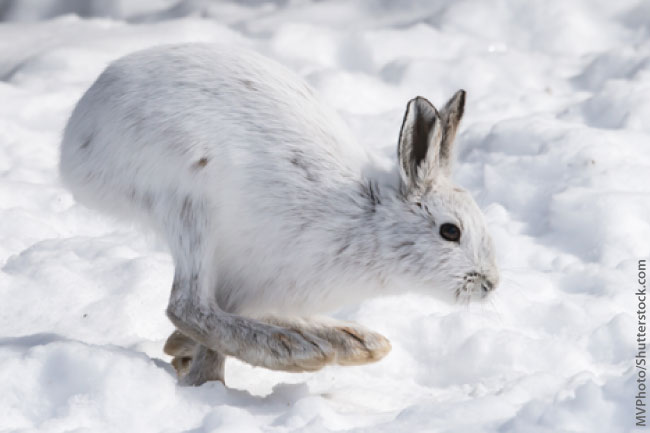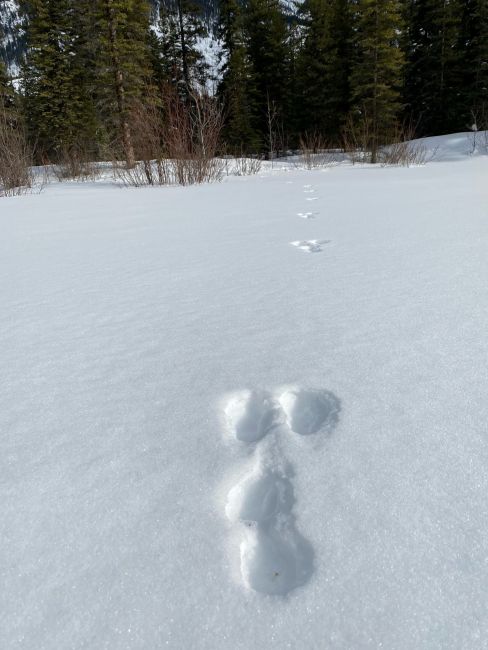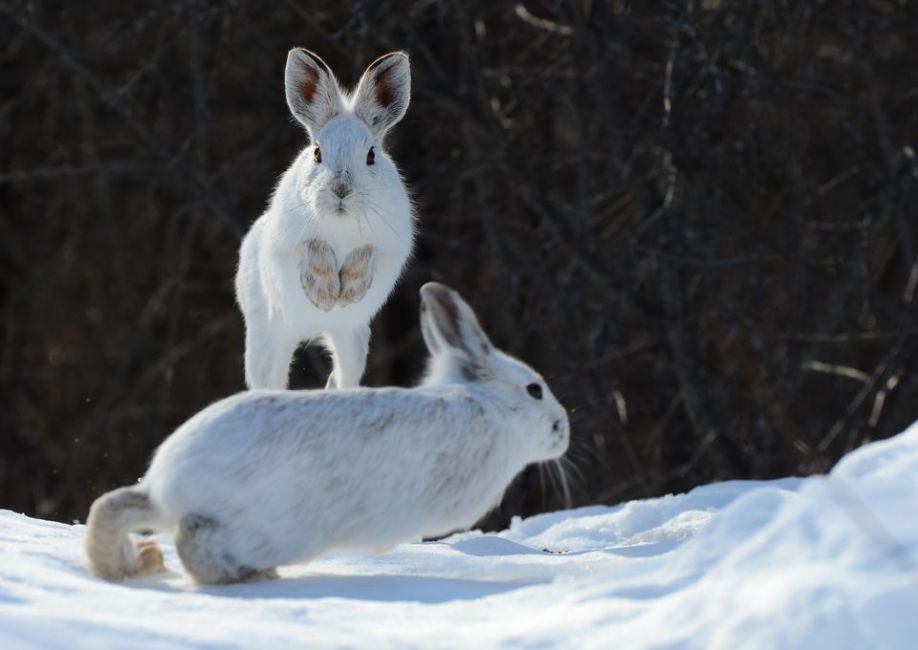If Elmer Fudd was looking to find a “wascally wabbit” in Banff National Park, he’d be out of luck! What is found here are Snowshoe hare which look like rabbits, in the Rabbit/Hare family, but not true rabbits since they’re in the order of Lagomorpha with their cousins, the Pika.
Although Snowshoe hare are common in the forest, Fudd would have a hard time seeing them since they’re nocturnal, active at night. By day Snowshoe hare sleep fitfully in their form (beaten down spot under a large spruce or under a tangle of fallen trees), emerging at dusk in summer to feed upon grasses, wildflowers, new leaves of aspen, willow, and birch, then in winter on evergreen leaves of kinnikinnik and winter green and sometimes lichen. With double sets of upper incisors, they can nip off twig ends and buds of shrubs leaving a sharp forty-five-degree angle that looks like they were cut with a knife!

Fudd would also have a hard time seeing Snowshoe hare due to their camouflage coat and their lightning speed! Moulting twice a year, their coat is brown or grayish with a white belly in summer and white with black-tipped ears in winter/spring. The airspace in their skull lightens their load and long hind legs provide jet propulsion. To evade capture, they can run up to 43 kph, quickly change direction, and are good swimmers. In winter the soles of their feet are densely furred for warmth, with stiffer hairs on their splayed hind feet like studded snow tires. Young snowshoe hare, leverets, freeze when frightened hoping their camo coat will suffice since their bodies haven’t developed enough for speed.

Snowshoe hare breed like wascally wabbits, starting in mid-March through to mid-summer. The male/buck will chase the female/doe, with the former leaping into the air while the later runs underneath to be sprayed with urine! Sounds gross but the doe can sniff out important pheromonal info from the urine to figure out if the prospective buck has the best goods to be their mate. Gestation is a little more than a month with 3-4 precocious leverets born with their eyes open and a furry coat. Rabbit young are born atricial; blind and naked. Snowshoe hare usually have one more litter that summer and sometimes two. Yearly survival is only 10-50% with owls, lynx, pine martens, cougars, foxes, coyotes, and wolves as their prime predators.

Elmer Fudd’s wascally wabbits don’t have a chance in Banff National Park since they aren’t precocious, don’t have the camo coat, and they aren’t built for speed, especially in winter, like the Snowshoe hare!
By Kristi Beetch
ACMG Day Hiking and Winter Travel Guide, IGA Master and Professional Interpreter